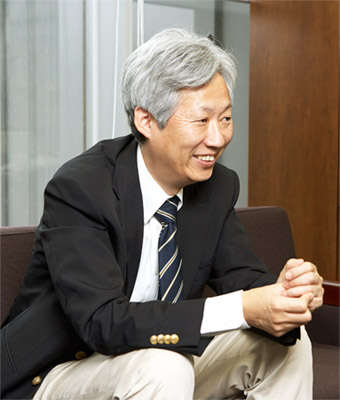
In 2012 the CHIKYU has been very busy from spring to autumn. So what has been achieved in those six months? And where is the CHIKYU heading now?
(Published online October 2012)
| Interviewee: Wataru Azuma Director-General of the Center for Deep Earth Exploration(CDEX). |
Building on the Japan Trench Fast Drilling Project

The CHIKYU was involved in the Japan Trench Fast Drilling Project (JFAST) expedition from April-May 2012. The objectives of the JFAST expedition were Logging While Drilling (LWD) in the hypocenter region of the Tohoku Earthquake, the collection of geological samples and the installation of temperature sensors in the fault zone. Plagued by bad weather and equipment failures, not all planned objectives were achieved during the initial scheduled expedition. An additional operation was hurriedly decided on however in July, and the goal to install temperature sensor equipment in the fault zone was achieved. The planning for this proceeded at a galloping pace from the point the earthquake happened, and we received the cooperation of many people to make it a success.
This experience will be capitalised on for the Nankai Trough Seismogenic Zone Experiment (NanTroSEIZE) which starts in October 2012. The NanTroSEIZE expedition in financial year 2012 plans to drill to depths of 3,600m into the seafloor which lies at a depth of approx. 2,000m, and collect samples. Currently, several simulation models have been published for the Tokai, Tonankai and Nankai earthquakes which are predicted for the not too distant future. Geological samples from the seismogenic zones are essential to make these simulation models accurate. The samples which the CHIKYU is aiming to collect are expected to be that kind of sample.
In the NanTroSEIZE planning the CHIKYU will stop and carry out drilling in a strong Kuroshio Current along the Pacific western boundary, which moves at a speed of six knots (approx. 10.8km/h). We have thoroughly investigated this for approximately one year and made improvements to the machinery in order to deal with this current. A lot will become clear when the samples obtained off the Tohoku coast and the NanTroSEIZE samples are compared.
- |1|
- 2|

